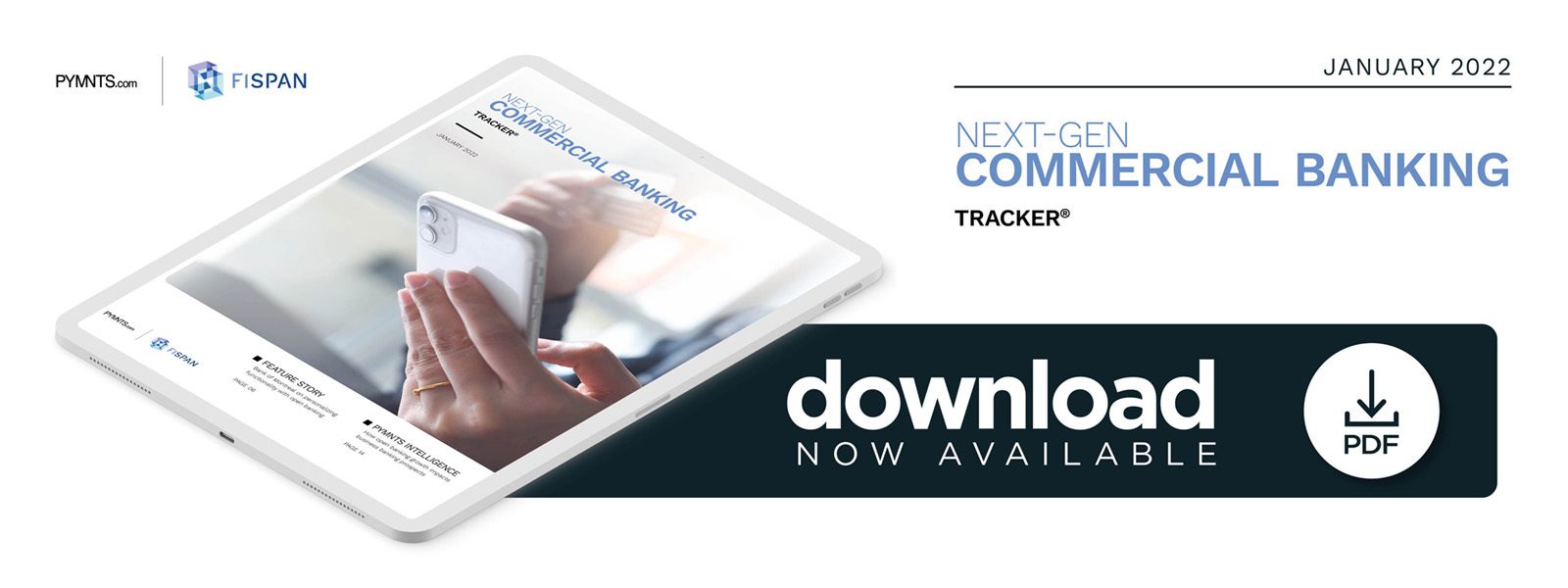PYMNTS Intelligence: How Open Banking Growth Impacts Business Banking Prospects

The pandemic forced many consumers and businesses to rethink how they make payments or conduct other previously routine banking functions, sparking rapid growth in the adoption of online banking tools. One report suggested that the health crisis propelled digital adoption forward five years.
This digital banking expansion has followed familiar consumer trends, with advances in mobile payment technology happening much faster than anticipated as retailers and financial institutions (FIs) pivoted in response to consumer demands for contactless ways to shop and pay their bills. What businesses expect from their relationships with their FIs has also irrevocably shifted from previous norms.
Open banking, which is powered by third-party FIs accessing the financial data of corporations and individuals with their permission, is gaining steam with the help of innovation. The increased use of application programming interface (API) technology, which enables computer systems to exchange and process data quickly and seamlessly, has made it easier to exchange financial data without physical input from the bank.
The bank itself becomes nonessential in this style of financial transaction, and that can benefit both businesses and their customers by saving them time and money. APIs reduce the risk of human error, freeing up treasurers for more strategic tasks. Bank statements and notifications can easily be received 24/7 year-round, and payments can be released automatically and directly from internal tools, such as enterprise resource planning (ERP) programs.
APIs are certainly not new. According to one report, some 80% of banks already use them to connect internal systems or provide customers with features that do not require bank portals, such as accessing an account or making cross-border payments through a client’s ERP system.
Entities around the world are utilizing APIs, but their use appears to be most widespread in the Asia-Pacific region, according to one report, which found that some 69% of Chinese businesses use them. Thailand businesses came in second at 55%, and about 54% of United Kingdom businesses currently use APIs.
Sensing a need to compete with counterparts as open banking becomes more popular, FIs have begun implementing APIs. One report estimated that the percentage of banks and credit unions that have invested in or developed APIs has grown from 35% in 2019 to 47% in 2021, and another 25% plan to invest in or develop APIs in 2022.
Open Banking’s Growth and Future Uses
Open banking’s benefits are staggering, and they include more effective cash management, as it enables banking to be done in real time with more visibility — giving treasurers the ability to shift money strategically to avert shortages and optimize surpluses. Loan access becomes much easier through open banking, as financial information and necessary documents are instantly available and processing time is dramatically shortened. Armed with the ability to view consolidated, aggregated accounts across banks or regions, commercial banks become advisors that can have data-driven conversations with clients to recommend strategies and solutions.
Open banking is expected to become ubiquitous within a short period of time. According to one report, the number of global open banking users is expected to grow annually by approximately 50%, rising from 25 million in 2020 to 132 million by 2024. Most of that growth will occur in the European market, which had already accounted for more than 12 million users in 2020 and is expected to grow to 64 million.
What might these developments mean for the future of open banking? One change could be that third-party FI startups and business entities may attempt to become banks. API proliferation has given rise to Banking-as-a-Service (BaaS) models that allow licensed banks to integrate digital banking services directly into their commercial clients’ products. A business could therefore offer debit cards, digital lending or payment services to customers through an app or website without needing to acquire a banking license.
A world powered by open banking is also a world in which banks will have to compete to gain and keep business as companies move their financial activities in-house. One report stated that more than 35% of corporates are considering third-party providers for advanced financial services or have brought those functions in-house to enable self-service. Another report found that $416 billion in banking revenue is at stake as the shift toward an open data economy increases competition with third-party financial services. Organizations that embrace open banking will be best prepared to thrive in this competitive future.

